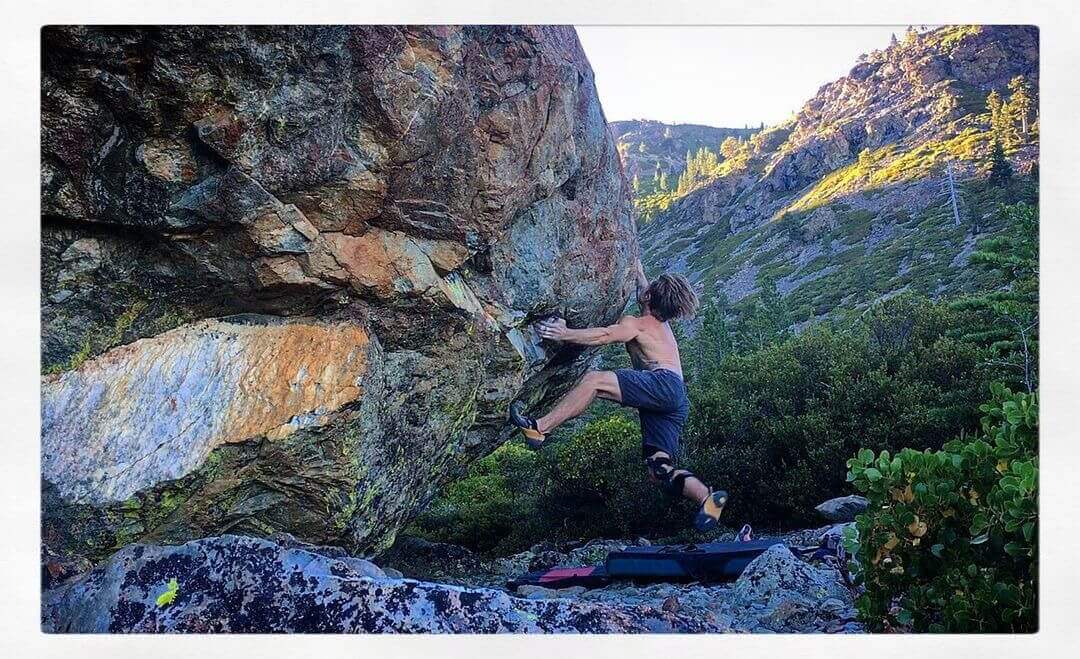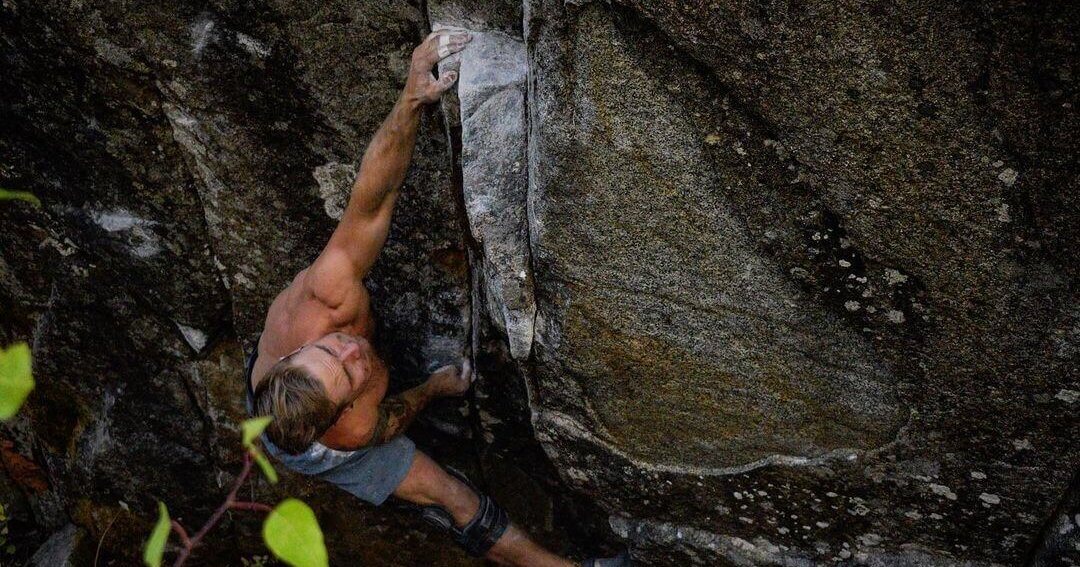by Trevor Seck
Climbing Injury
Things were starting to click. The training was paying off. I had just come off my best season bouldering in Leavenworth and found myself in Moe’s Valley, Utah. An old project ticked off in two goes and I felt unstoppable. I found myself falling on the last hard move of Crusader for Justice in a session, a boulder I thought was light-years out of my abilities. The session ended knowing after a rest day I would send. Then it happened. I felt the snap, the rush of pain, sweat pouring out of the entirety of my being. I knew this wasn’t right, knew I had injured myself seriously this time.
A casual spring day of skiing had turned into a nightmare. Skiing at Brian Head Resort in Utah seemed like a perfect rest day activity with my family. It was sunny and warm, a beautiful day to spend cruising groomers with my sixty-something Uncle and Dad. It wasn’t, it was the end of the world for me at the time.
The Surgery
I have been fortunate to avoid any major climbing injury in my adult life until that point. Sure, I have had minor pulley injuries, tweaked shoulders, and the like, but never anything requiring surgery. Fast forward a month, and I was preparing for surgery the next day. I’ll be honest, I was terrified. It may be a run-of-the-mill surgery, but the prospect of prying my knee open, ripping tendons out of my quadricep, and screwing them into my shin bone was not appetizing, to say the least.
It was two weeks of agony, sleepless nights filled with unceasing groans and the occasional tears. I wish I could say I was strong, was positive, but I wasn’t. Every hour was spent counting down the minutes until I could take more painkillers, anything to stop the pain, anything to sleep. I felt stuck in purgatory, just trying to numb myself to my reality, pass the time. Soon I couldn’t escape the thought that I would lose all of my strength climbing, all the training would be for naught. I would come out of this with a belly the shape of a bowling ball, flabby arms, and the weakest fingers this side of the Mississippi. It was like everything I had worked towards was left to be a memory of a past life.

Sure enough, I started sleeping again. The pain slowly faded, and every day got a little better. But I couldn’t shake the thought of my current situation. I had spent the better half of a decade putting climbing to the forefront of my life, working seasonally so I could be a dirtbag climber in the winters. Climbing was my self-worth, each send or failure a direct correlation to the quality of my life and being. This knee fiasco, this nightmare, gently nudged me in the direction of depression. What was I going to do for six months without climbing? Without being able to do the one thing that made me feel right? How could this not ruin my life? Something had to change.
The (Mental) Training
I started training like clockwork. My days were filled with hang-boarding, core workouts, and bodyweight strength training. It at least gave me something to do, something to work towards. It was an activity, something at least to de-fang the negativity swirling in my brain skull and calm my anxious mind. Motivation waxed and waned. What was the point of training if climbing was 6 months away, a lifetime in my eyes?
That is the crux of a climbing injury, motivation, and mental well-being. So how did I stay motivated? To be honest, I am still searching for that answer. For me, it is knowing that injuries don’t last forever, that the incremental gains in strength will pay off. Mind you, it’s easier said than done, and that’s part of it the process. Some days may be harder than others, but sticking to a training plan can act as a minute level of the structure during climbing injury life. Shifting goals has been an immense motivator for me as well.
Maybe it’s a goal of hanging an edge for 10 seconds, maybe it’s doing a one-arm pull-up, but the goals are motivation. A huge aspect of this process is tracking your training. Keeping a training log at least provides hard evidence of your progress, something you can look at to actually see your progress, stoke your motivation and psyche (well maybe psyche is a little bit of an embellishment). It’s not sending a project anymore, it’s about checking the box for these minute physical feats. But the shift in focus had given me at least some sort of purpose in training.
Finding Joy Through Recovery
I wish I could say training is enough to make me happy, but I quickly found it wasn’t. Hours dragged by, days seemed like an eternity. My small one-bedroom house started to feel like a prison. Some serious soul searching was in order. I have had to find other focuses, interests, and skills. I started diving into the pursuit of baking a perfect loaf of sourdough, of reading books I have put off for years, of playing banjo consistently. If nothing else, these hobbies will make rest days that much more enjoyable, right? Aside from climbing, what gets you excited, what interests you? What have you always wanted to learn? Is it baking bread, crocheting, or maybe it’s shooting a bow and arrow in your yard?
I guess the thing I realized in all of this is that climbing, as much as some people may disagree, is not everything. I think there is value in being a more well-rounded person, a person with a multitude of skills and interests. Let’s be honest, life situations may change, health may change, and climbing may not always be feasible throughout life. Maybe a new job sucks your soul dry for a while, maybe a climbing injury takes you out of commission. I am not saying that climbing will fall to the wayside, become part of the identity of a past life for me. Rather, it’s growing, learning other things that bring me joy.
Grow Through Injury
I was at physical therapy one day, looking around the room as my therapist dug his way into my knee with what seemed like gorilla paws trying to rip a coconut in half. Soon the table I was on turned into a self-created slip n’ slide of sweat as I tried in vain to squirm away when my eyes met the flashy flat screen bolted to the wall. “Grow through injury, don’t just go through it.” What a cliche, eh? I almost laughed. But that night, I couldn’t get it out of my head. I woke the next morning to this mantra ping-ponging around the fishbowl I call a brain. It all clicked.
Maybe this wasn’t that bad after all. At this point, my baking has progressed exponentially, I have read numerous books (can we recognize how good Westerns are?), and learned a plethora of old-timey banjo songs. My two, sweet furry angels (a.k.a. dogs) have gotten more attention than they have in years. My fingers are stronger than ever. I am starting to wonder what 6 months of training can do for my climbing. There is a silver lining in all of this, or at least that is the mindset you need to succeed through injury.
Conclusion
It’s been just over a year since my surgery now. I have sent more boulders and harder grades in the last 6 months than I ever have in my life (no seriously!). This is the year climbing has seemed to click, a plateau shattered. Undoubtedly, I can credit 6 months of focused training for this improvement, and it is something to look back on as a masochistic, but beneficial, point in my life. I came out of this all for the better. All the hours spent in front of the hangboard, all the time spent logging training sessions, it was for something. The takeaway is that you will come back from a climbing injury and, if you stay focused, can even come back stronger.
We, as humans, aren’t static creatures, and happiness isn’t always there. Some days I was happier than a pig in mud, while others I slipped back into a depressed puddle of human on the couch. I guess that’s just part of the process. But I know, sticking to training does pay off. Focusing on the small gains is a way to stay positive, knowing your efforts will pay off. Time away is never a bad thing, and I can tell you I’m more psyched to climb than ever.


